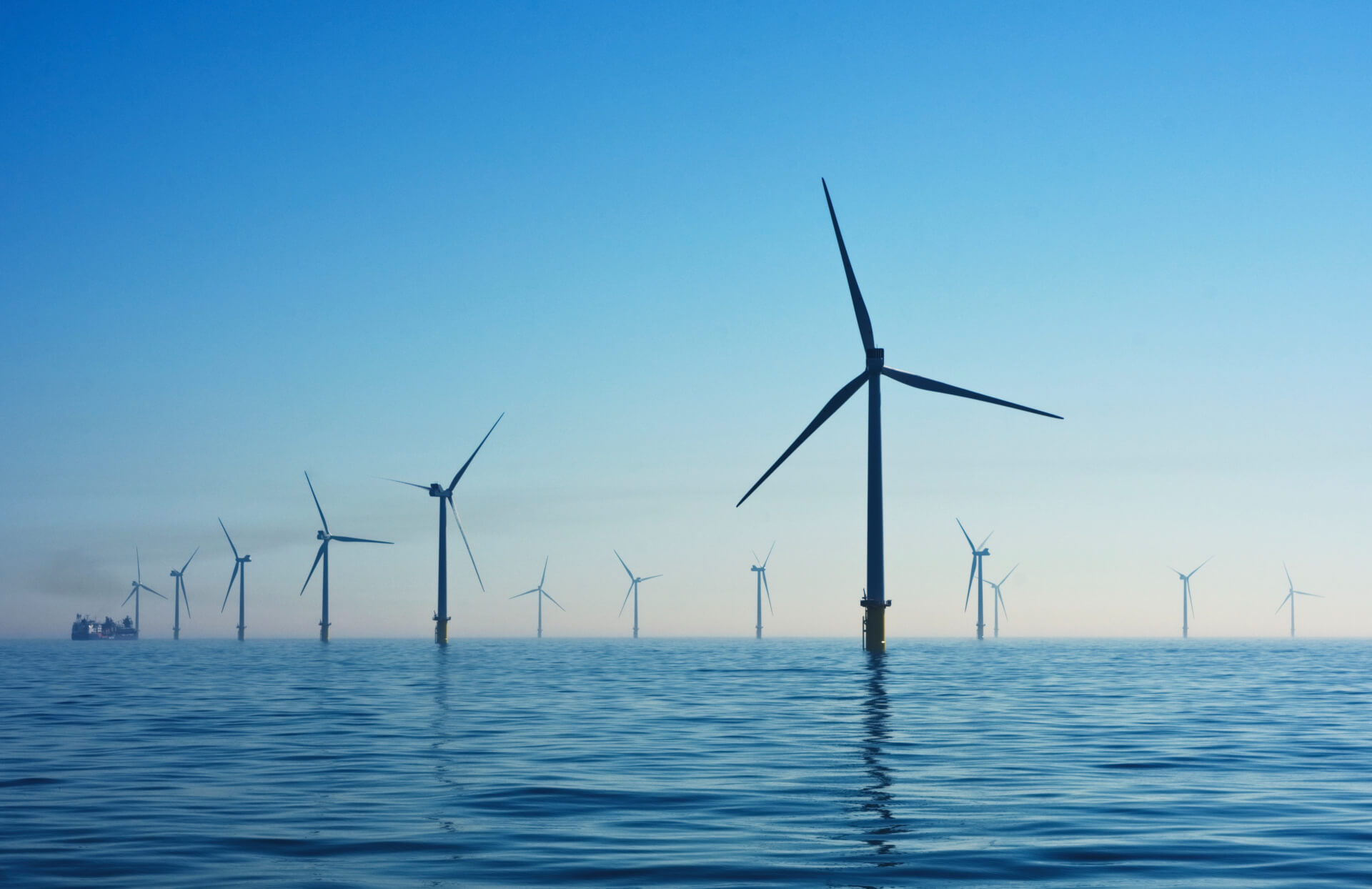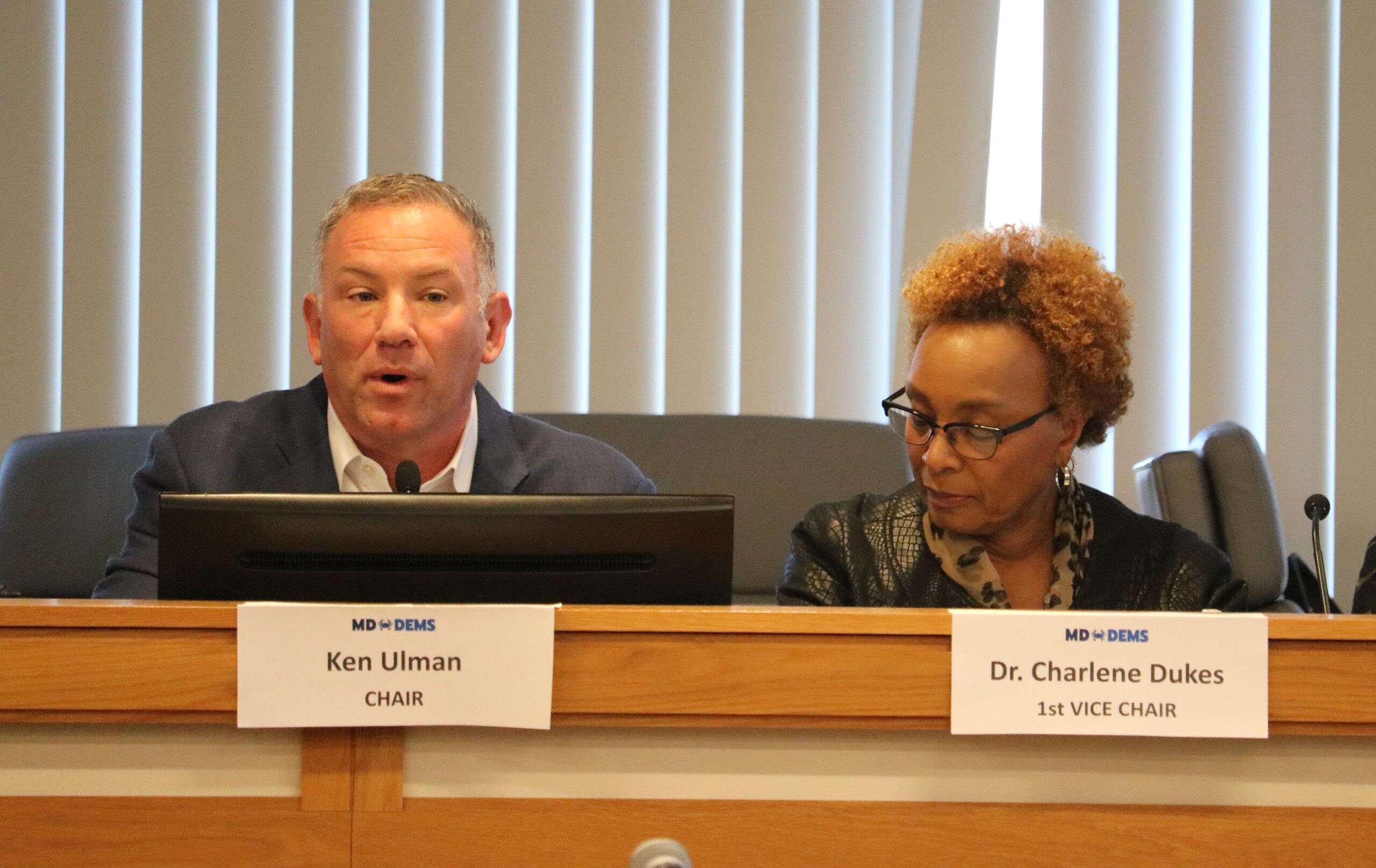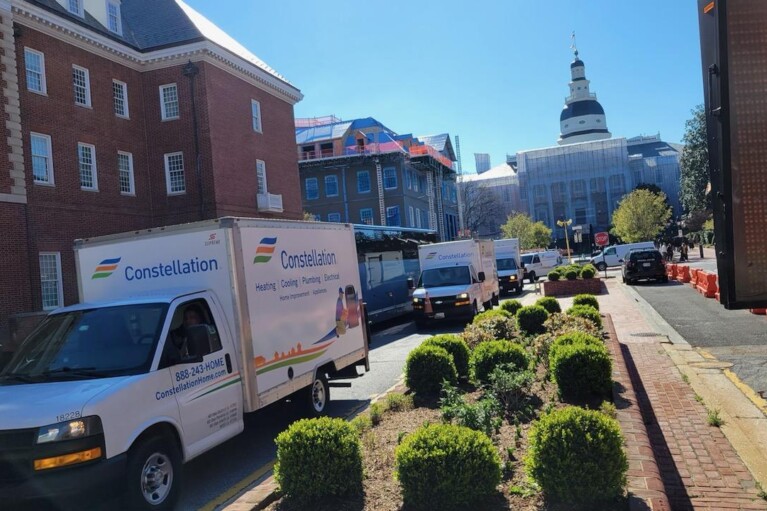Expanding offshore wind power would have ‘multitude of benefits’ for Md., report suggests

A new report is laying out the economic and environmental benefits of expanding offshore wind energy production in Maryland — before a single wind turbine has been placed in the Atlantic off the coast of Ocean City.
The report, commissioned by the Chesapeake Climate Action Network and released Thursday, found that expanding the offshore wind industry in Maryland will provide “a multitude of benefits” over the next several years, including $5 billion in savings to electricity ratepayers and myriad environmental and public health advantages, according to Isaac Gabel Frank, the author of the study.
“Over the next decade, we expect the cost of offshore wind to continue to fall,” he said during a briefing with reporters on Wednesday.
The Climate Solutions Now Act, which passed through the General Assembly earlier this year and is gradually taking effect, calls for a 60% reduction in greenhouse gas emissions in Maryland by 2031 and a full carbon-neutral economy by 2045. While the legislation doesn’t specifically set goals for the amount of offshore wind energy the state must generate, “Maryland can’t achieve its ambitious net-zero climate goals by 2045 without a robust buildout of offshore wind,” said Josh Kaplowitz, vice president for offshore wind at the American Clean Power Association.
The state’s climate ambitions require swift action, several people on the call asserted.
“2031 seems kind of far right now, but it’s not,” Gabel Frank said.
The federal government has already approved four wind energy projects off the coast of Ocean City — the first phase, which could be operational by 2025 or 2026, would generate 368 megawatts of electricity, while the second phase would generate 1,654 megawatts. Taken together, the projects could power more than 600,000 Maryland homes.
But the U.S. Interior Department’s Bureau of Ocean Energy Management under President Biden wants to aggressively expand the amount of offshore wind energy generation throughout the country and could auction off more lease sites in the Atlantic as soon as next year.
The new study attempts to calculate the economic and environmental benefits of an additional 6,000 megawatts of electricity being generated from wind turbines in federal waters.
It’s a wonky, statistics-laden study, full of jargon like “effective load carrying capability,” “market seller offer cap,” “demand reduction induced price effects,” and “calculated merit order impact.”
Still, advocates are hoping the conclusions are calculable and relatable for average citizens — and state lawmakers.
Del. Lorig Charkoudian (D-Montgomery), who called the study “wildly exciting for a variety of reasons,” said she plans to introduce legislative in the upcoming General Assembly session that would ease the transmission of electricity generated from the offshore wind projects and would create new ways of financing the wind energy installations.
“We’re really starting to put together the package that guarantees that we can take this step” to expand offshore wind production, Charkoudian said.
Right now, US Wind, which has won leases for two offshore wind projects off the Maryland coast, and Ørsted, which will operate the other two, are scrambling to find transmission stations in Maryland or Delaware to bring their power onshore and connect it to the electric grid. Charkoudian likened it to looking for an extension chord that can connect from the shoreline to the windmills.
Charkoudian envisions legislation that would enable the state to build its own transmission station onshore that all of the offshore wind projects could connect to. That would be more efficient and more environmentally sound than having each individual wind developer looking for a landing point, she said.
Charkoudian is also considering a measure that would transfer the “risk” — meaning the higher cost — of offshore wind energy from ratepayers to taxpayers, which, she argued, would be a fairer financial scheme.
But the advocates who discussed the report during the online news conference Wednesday said any costs associated with expanding offshore wind production would be more than offset by the eventual savings and environmental and public health benefits, especially with the federal Inflation Reduction Act providing new and extended incentives for renewable energy and carbon-reduction programs.
US Wind and Ørsted combined are already investing almost $400 million in Maryland for facilities to build, assemble, ship, store and repair the wind turbines and component parts, along with related commercial activities at the Tradepoint Atlantic industrial site in Baltimore County and locations throughout the Eastern Shore. Those investments would expand exponentially and potentially position Maryland as a regional center for the offshore wind economy, the report found.
That’s one of the reasons why trade unions are enthusiastically supporting the expansion of offshore wind in the state. US Wind is planning to build a steel plant at Tradepoint Atlantic, site of the shuttered Bethlehem Steel factory that employed thousands of Baltimore-area steelworkers for generations. The new plant is expected to provide about 500 steelworker jobs when it’s fully operational.
“Steelworkers will be returning back home to Sparrows Point, to Tradepoint Atlantic,” said Jim Strong, United Steelworkers union subdistrict Maryland director.




 Creative Commons Attribution
Creative Commons Attribution